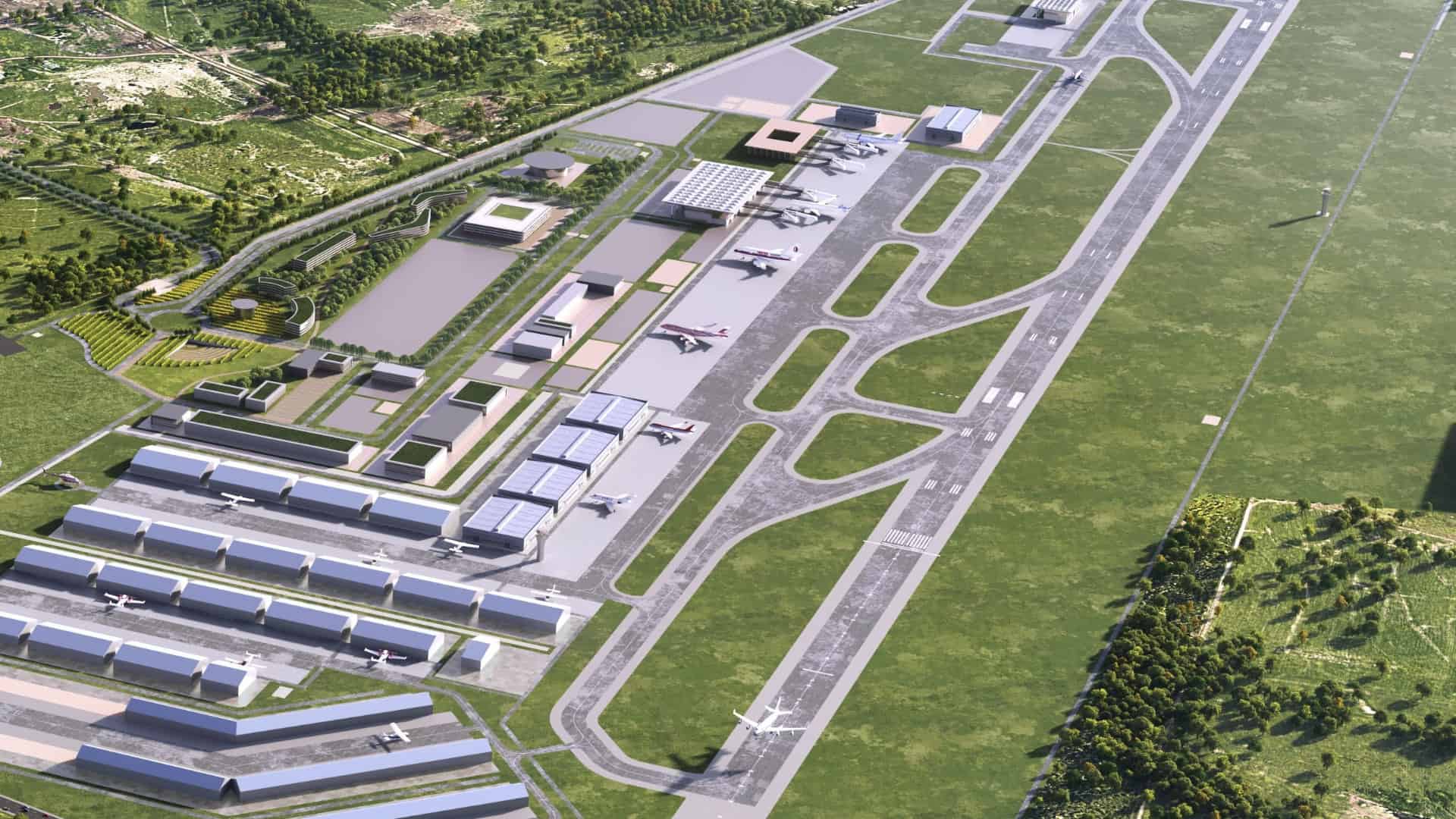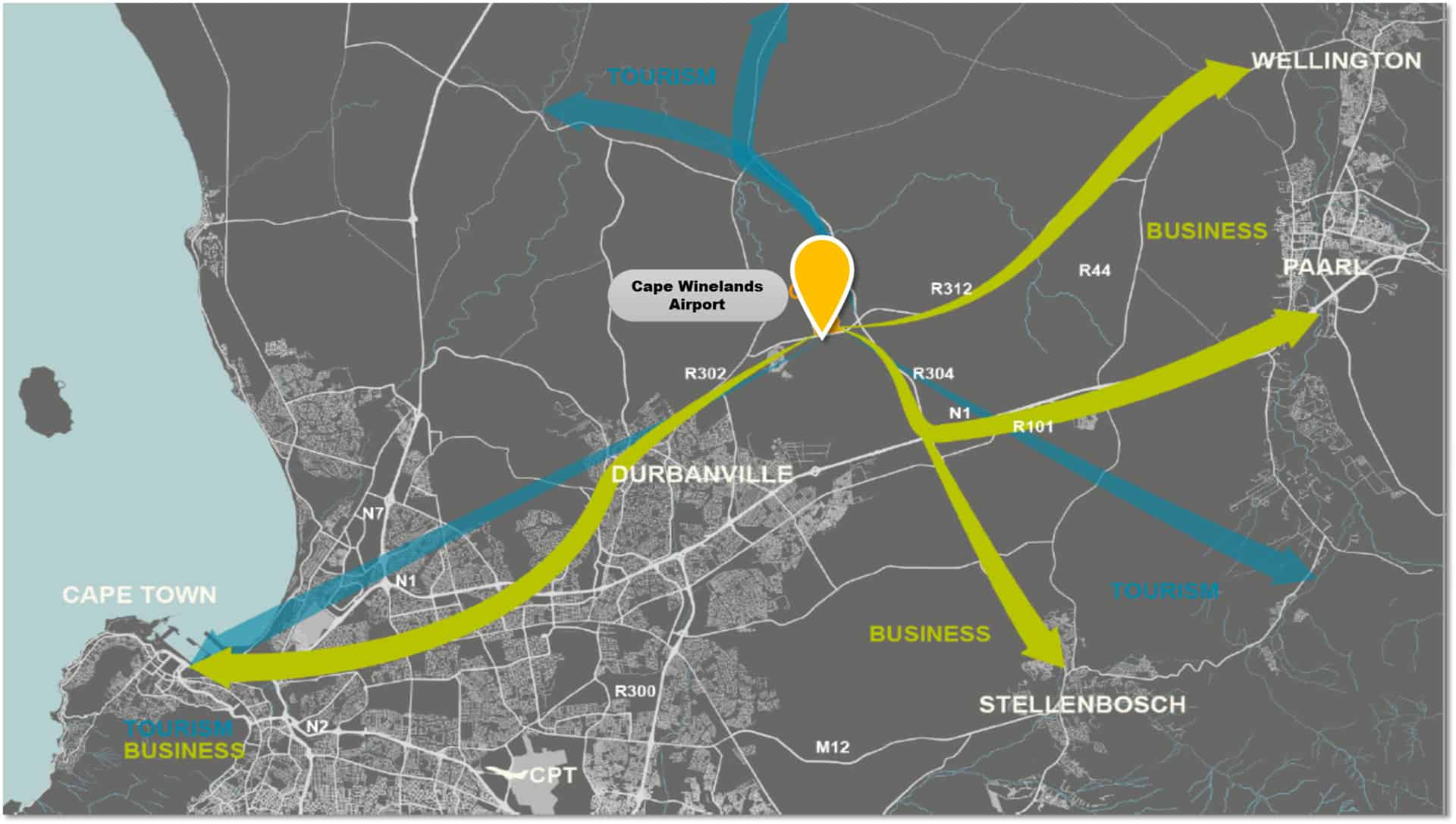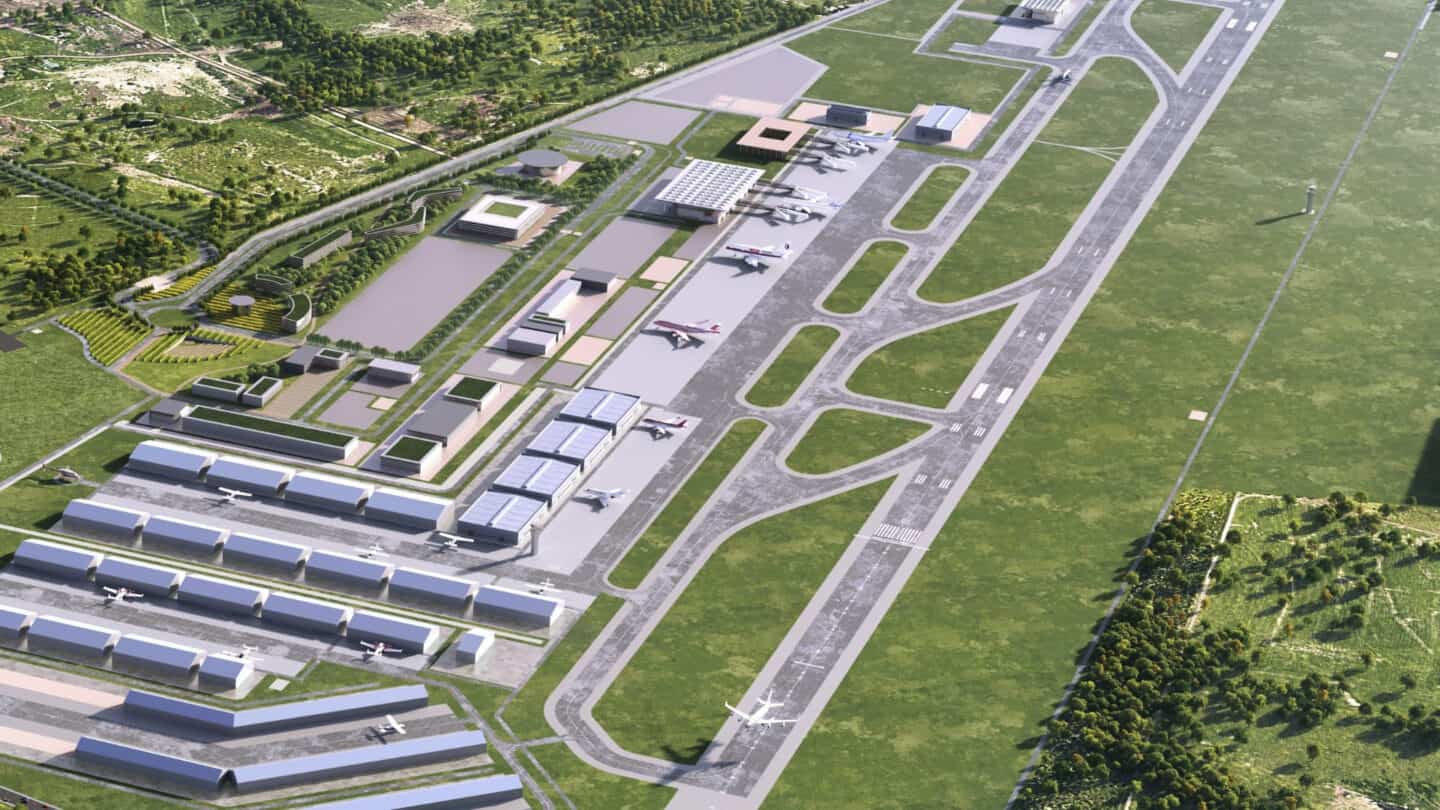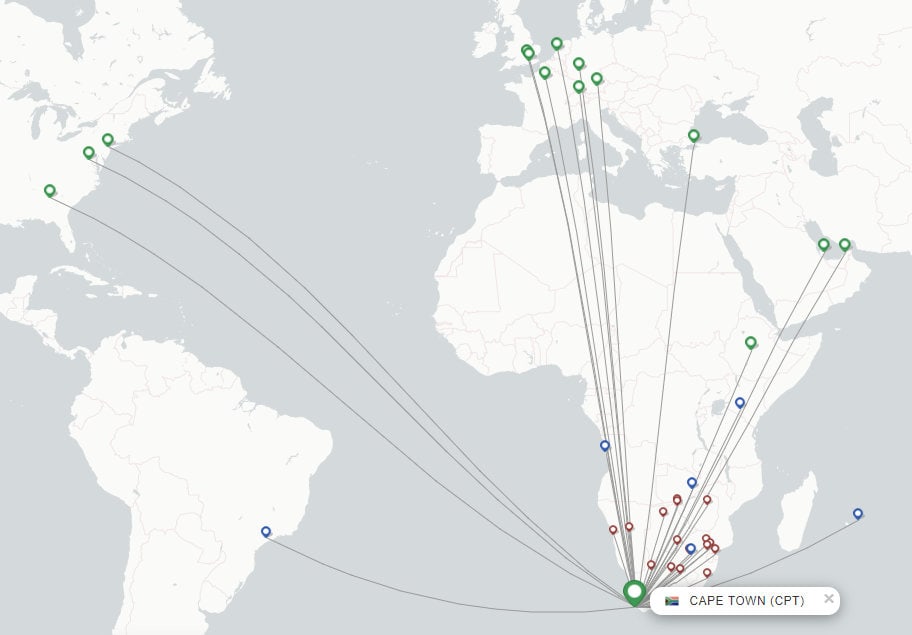Your new airport

Overview
The Cape Winelands Airport plan delineates a strategic vision for the airport’s evolution from a modest airfield to an influential commercial and aviation centre. The blueprint underscores the airport’s ambitious goal to emerge as a global leader in sustainability, technology, and growth rates. More than just an aviation hub, the strategy emphasizes the airport’s potential as an engine for regional economic development and local community inclusion.
Located in the iconic city of Cape Town, a destination celebrated by global and local travellers alike, Cape Winelands Airport is poised to harness unparalleled opportunities. Its strategic importance transcends tourism, aligning with Cape Town’s thriving business landscape. The core goal is to establish a cohesive link with Cape Town, fostering a partnership that mutually benefits both the city and the airport.
The aviation sector is broad and complex, with multiple unique, heterogenous sub-sectors within it which each face unique constraints and opportunities. CWA will fulfil numerous key roles within the aviation sector, addressing these constraints and opportunities, and significantly improving the socioeconomic landscape within the region. This is achieved by performing and/or facilitating the following functions:
- Scheduled Airline Services for domestic and international passenger and cargo operations.
- General Aviation for domestic and international, unscheduled and private operations.
- Alternate Airport for fuel planning purposes and environmental savings.
- Reliever Airport, adding redundancy and diversion capability for aircraft in the region.
- Logistics Hub catalysing multi-modal commercial activity in the region and stimulating economic growth.
- Commercial Property Developments stimulated and enabled by the above.

The development plans
The airport’s transformation will include the development of key airport infrastructure such as:
Realigned runway and associated aircraft parking stands
The airport currently has four runways. In the future development plan, one of these will be realigned and extended to a Code 4F runway built to a new orientation, capable of accommodating wide-body aircraft. In addition, aircraft parking stands will be included.
New terminal building
A boutique terminal building including state of the art processing facilities will be built. The terminal building will leverage off the latest technology and provide modern solutions for check-in, baggage handling and security. Shop, work, connect and play.
Cargo processing facility
The cargo facility will be a key part of the development. The success of airline operations is directly linked to their ability to fill the belly of the aircraft. A cargo processing facility that will be will be built with ease of access to the airside.
New hangarage
The development includes additional hangars needed to serve the General Aviation, Business Aviation and Airline sectors, providing an environment for aviation to flourish.
Fuelling facilities
Aviation fuel storage comprising JetA1 and Avgas will be included, with special spatial allocation for sustainable aviation fuels (SAFs) in line with the aviation industry’s move towards a greener future.
A fuelling station is expected to be built at the entrance to the airport. As is typically seen globally they service airport users, but also individuals in proximity to the airport.
Other Planned Infrastructure
- Hotel accommodation for passengers and flight students
- Heliport
- Warehousing and logistics facilities
The combination of transport linkages and commercial activity can galvanise demand for light-industrial facilities such as logistics, warehousing and even air freight (depending on sufficient flight connectivity). Each of these activities generates non-aeronautical revenue that can support the development of the airport and create a diversified business.

Growthpoint Properties partnership


Growthpoint Properties and Cape Winelands Airport have entered into a landmark partnership to develop the Western Cape’s next-generation aviation hub.
The collaboration combines Cape Winelands Airport’s aviation vision with Growthpoint’s institutional investment, property expertise, and governance capability to deliver a world-class airport precinct for the region.
Growthpoint has taken an equity position in the airport and will oversee property and asset management across logistics, commercial, and hospitality sectors. Its role includes governance oversight, long-term precinct planning, and the integration of sustainability and community benefit principles throughout every phase of development.
Together, Growthpoint Properties and Cape Winelands Airport are creating a platform for long-term investment, innovation, and opportunity that will strengthen the Western Cape’s logistics, trade, and tourism network while contributing to economic growth and job creation.
Current progress
Environmental authorisation
The size and scope of the airport development requires that an environmental impact assessment (EIA) is undertaken. The airport recently lodged its Notice of intent to submit an application for Environmental Authorisation, marking a crucial step forward in the realisation of its vision.
EIAs are a tool used to evaluate the effects of a project or development proposal on the environment. They help to ensure that developers adopt an environmentally responsible approach to their development and aim to avoid, reduce or offset any environmental impacts.
It is an important process in any development which requires the integration of social, economic and environmental factors. In South Africa the EIA is a key regulatory instrument. It is one of the processes that actively promotes or ensures sustainable development.
A key component of an EIA includes a public participation process. Led by an independent environmental practitioner, significant progress has already been made. Numerous specialists have been commissioned to conduct an array of studies.
Why a second airport?
1. Airline capacity
Especially during peak periods, Cape Town needs a second airport to handle the ever-increasing demand.
2. General aviation capacity
The region’s airfields suffer from a major hangar shortage, prohibiting any further growth. In addition, General Aviation (GA) activity is not supported at the main commercial airport (Cape Town International Airport - CTIA) due to the airspace and runway congestion it creates. Moving GA to Cape Winelands Airport will therefore even reduce inefficiencies at CTIA.
3. Redundancy
Cape Town is an isolated city. A new airport is needed in order to add close-by redundancy to the region in case of emergency, unsuitability or unavailability at other airports in the region. Such events include runway closures, equipment failures and low visibility operations.
4. Fuel planning optimisation
Cape Winelands Airport as a much closer destination alternate can be used by airlines in fuel planning for flights inbound to Cape Town, to optimise their operations by lowering the quantum of reserve fuel carried each flight. This enables substantial weight savings, thereby reducing payload restrictions and fuel consumption each flight.
5. Positive environmental impact
Because of the savings in fuel consumption that Cape Winelands Airport will enable, carbon emissions will also decrease, benefiting the entire airline industry.
6. Improved air access
Because of the increased capacity and optimised aircraft performance that Cape Winelands Airport enables, the business case improves for air travel into the region, thereby creating new opportunities for air access and route development that otherwise would not be possible.
7. Affordability & accessbility
Cape Winelands Airport is a convenient option for air travel for residents of the north and eastern parts of the region. This reduction in travel time, combined with the improved business case for airlines, creates an environment for more affordable and accessible air travel, for more South Africans.
8. Socio-economic growth
Airports are known drivers of commercial activity. Cape Winelands Airport will serve as a catalyst for economic growth in the region, attracting significant investment and boosting sustained job creation in the Cape’s future growth corridor.
Destination alternate explained
At only 25km away from Cape Town International Airport, Cape Winelands Airport will provide airlines with a much closer planning alternate airport that can be used for diversion fuel planning on flights inbound to Cape Town, enabling significant reductions in the quantum of additional reserve fuel that is required to be carried each flight, as imposed by regulators.
A planning alternate airport is a designated airport that a flight crew plans to divert to in case of unexpected events or emergencies during a flight. It is a backup airport chosen as part of the flight planning process to ensure the safety and availability of an alternative landing site if the primary destination airport becomes unavailable due to weather, equipment issues, or other factors.
For most long-haul operations inbound to Cape Town, the Alternate Airport used by airlines for fuel planning is O.R. Tambo International Airport at 1,270km away, requiring approximately 2 hours of additional fuel to be carried each flight.
This additional fuel places a significant weight burden on operators – as much as 10,000kg – resulting in increased payload restrictions, increased fuel burn and increased carbon emissions. This fuel burden will definitely be substantially reduced once Cape Winelands Airport commences its operations.
To evaluate this, an independent consultant was appointed to perform an assessment and to provide an indicative quantification of the implications, given a set of assumptions and parameters – PACE Aerospace Engineering & IT GmBH – indicating millions of kilograms in fuel savings and payload increases each year, enabling substantial value for airlines.
Frequently asked questions
Ask us a question-
Where is the airport located?
CWA is situated just off the N1 to the north-east of Durbanville.
-
Is the airport currently operating?
CWA has been in existence since 1943 and currently facilitates light aircraft operations only.
-
When will the expanded airport open?
The development is subject to various authorisations and approvals which are currently underway. Keep an eye out for updates on expected timelines.
-
Where can I go to get my own hangar?
Register on our waiting list here.
-
Will the expansion project create new jobs? How can I apply?
The development is expected to create thousands of jobs during and post-construction. Keep an eye out for new opportunities in the OPPORTUNITIES section on the website, or register here.


